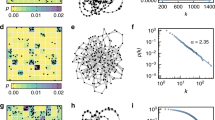Abstract
The notion of density has been widely used in many spatial-temporal (ST) clustering methods. This paper proposes the novel notion of an ST density-wave, which is an extension of the notion of density. It also presents a new grid-based ST clustering algorithm called Gridwave based on the notion of ST density-waves and ST synchronization. The proposed algorithm can be used to discover synchronized changes in density among various locations as well as distinguish ST events and noise from market transaction data. Based on the theory of small-world networks, our algorithm can be used to evaluate ST synchronized correlations among regions with respective to the ST density over the whole network. To improve its performance, the proposed algorithm was implemented using parallel computing. To verify its feasibility, a real large-scale market transaction dataset was used to demonstrate the ST synchronized correlations and the final clustering results. Although our algorithm is applied in a domain-specific case, we suggest that the clustering notion and method could be generalized for other domain applications with similar ST data.




Similar content being viewed by others
References
Amaral LAN, Scala A, Barthelemy M et al (2000) Classes of small-world networks. Proc Natl Acad Sci 97(21):11149–11152
Ankerst M, Breunig MM, Kriegel HP, et al (1999) OPTICS: ordering points to identify the clus-tering structure. SIGMOD 1999, proceedings ACM SIGMOD international conference on Management of Data, Philadelphia, 49–60
Baidu map API[EB/OL].[2017–06-30]. http://lbsyun.baidu.com/
Barabási AL, Albert R (1999) Emergence of scaling in random networks. Science 286(5439):509–512
Birant D, Kut A (2007) ST-DBSCAN: an algorithm for clustering spatial–temporal data[J]. Data Knowl Eng 60(1):208–221
Darong H, Peng W (2012) Grid-based DBSCAN algorithm with referential parameters. Phys Procedia 24:1166–1170
Ester M, Kriegel HP, Sander J et al (1996) A density-based algorithm for discovering clusters in large spatial databases with noise. Kdd 96(34):226–231
Gan J, Tao Y (2015) DBSCAN revisited: mis-claim, un-fixability, and approxima-tion. Proceedings of the 2015 ACM SIGMOD international conference on Management of Data. ACM, Melbourne, pp 519–530.
Hinneburg A, Gabriel HH (2007) Denclue 2.0: Fast clustering based on kernel density estimation. International symposium on intelligent data analysis. Springer, Berlin, Heidelberg, pp 70–80
Hinneburg A, Keim DA (1998) An efficient approach to clustering in large multimedia databases with noise. KDD 98:58–65
Holten D, Van Wijk JJ (2010) Force-directed edge bundling for graph visualization. Comput Graphics Forum 28(3):983–990
Hu R, Zhu X, Cheng D, et al. (2017) Graph self-representation method for unsupervised feature selection. Neurocomputing 220:130–137
Kisilevich S, Mansmann F, Nanni M, et al. Spatio-temporal clustering: a survey. data mining and knowledge discovery handbook. Springer US, 2010:855–874
Lee KM, Sang YL, Lee KM et al. (2017) Density and frequency-aware cluster identification for spatiotemporal sequence data. Wirel Pers Commun 93:47–65.
Ma S, Wang TJ, Tang SW, et al. (2003) A new fast clustering algorithm based on reference and density. International Conference on Web-Age Information Management, vol 2762. Electrical and Computer Engineering IEEE, Chengdu, pp 2276–2279
Qiu BZ, Zhang X, Shen J (2005) Grid-based clustering algorithm for multi-density. Machine learning and cybernetics, 2005. Proceedings of 2005 international conference on. IEEE 3:1509–1512
Rodriguez A, Laio A (2014) Clustering by fast search and find of density peaks. Science 344(6191):1492–1496
Tsai CF, Wu CT (2009) GF-DBSCAN: a new efficient and effective data clustering technique for large databases Proceedings of the 9th WSEAS international conference on multimedia systems & signal processing. World scientific and engineering academy and society (WSEAS), Hangzhou, pp 231-236
Uncu O, Gruver W, Kotak DB et al (2006) GRIDBSCAN: GRId density-based spatial clustering of applications with noise. IEEE International Conference on Systems, Man and Cybernetics, vol 4. IEEE, Taipei, pp 2976–2981
Viswanath P, Pinkesh R (2006) L-dbscan: a fast hybrid density based clustering method. ICPR ‘06 Proceedings of the 18th International Conference on Pattern Recognition, vol 1. IEEE Computer Society, Washington, DC, pp 912–915
Wang M, Wang A, Li A (2006) Mining Spatial-temporal Clusters from Geo-databases. International Conference on Advanced Data Mining and Applications, vol 4093. Springer, Berlin, Heidelberg, pp 263–270
Wang S, Wang D, Li C et al (2016) Clustering by fast search and find of density peaks with data field. Chin J Electron 25(3):397–402
Watts DJ, Strogatz SH (1998) Collective dynamics of ‘small-world’networks. Nature 393(6684):440–442
Xiaoyun C, Yufang M, Yan Z, et al (2008) GMDBSCAN: multi-density DBSCAN cluster based on grid. ICEBE ‘08 Proceedings of the 2008 IEEE International Conference on e-Business Engineering. IEEE, Xi’an, pp 780–783
Zhou S, Zhou A, Jin W et al (2000) FDBSCAN: a fast DBSCAN algorithm. Ruan Jian Xue Bao 11(6):735–744
Zhu X, Li X, Zhang S (2016) Block-row sparse multiview multilabel learning for image classification. IEEE Trans Cybern 46(2):450
Zhu X, Li X, Zhang S et al (2016) Robust joint graph sparse coding for unsupervised spectral feature selection. IEEE Trans Neural Netw Learning Syst 28(6):1263–1275
Acknowledgements
This work was supported in part by the Chinese Universities Scientific Fund, project number 2017XD001. The authors would also like to thank China Tobacco Guangxi Industrial Co., Ltd., for supporting this research.
Author information
Authors and Affiliations
Corresponding author
Rights and permissions
About this article
Cite this article
Deng, C., Song, J., Sun, R. et al. Gridwave: a grid-based clustering algorithm for market transaction data based on spatial-temporal density-waves and synchronization. Multimed Tools Appl 77, 29623–29637 (2018). https://doi.org/10.1007/s11042-017-5441-z
Received:
Revised:
Accepted:
Published:
Issue Date:
DOI: https://doi.org/10.1007/s11042-017-5441-z




